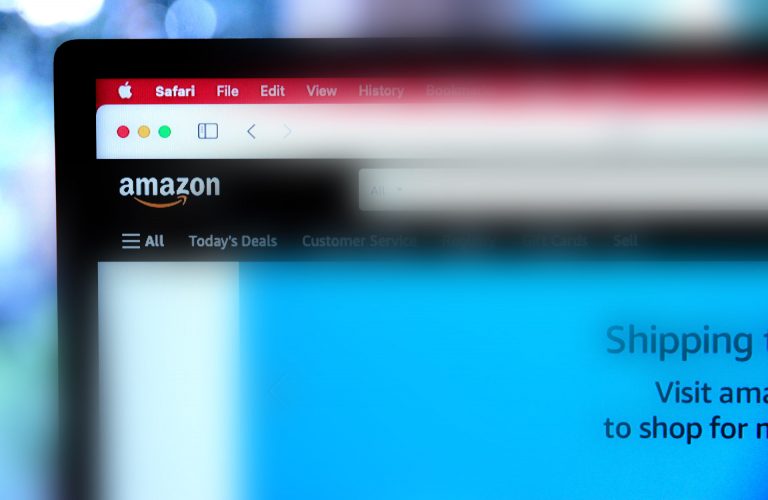Communication is an essential part of any business. It helps business organizations to progress and achieve their goals. In the past, businesses used traditional methods of communication, such as face-to-face meetings, telephone calls, and written correspondence. However, with the advent of technology, they have started to use new methods of communication such as email, instant messaging, video conferencing, and social media.
Technology has had a significant impact on business communication. It has made communication faster, easier, and more efficient. Businesses are now assured of promptly communicating their messages to their employees, customers, and partners. Technology has also made it possible for them to communicate with people from all over the world. It has helped businesses to expand their reach and build new relationships.
Here’s a detailed explanation of how technology has influenced business communication.
- Businesses Can Send Bulk SMS
Bulk messaging is a service that allows businesses to send SMS messages to large groups of people at once. It is a very efficient way of communicating with employees, customers, and partners. In the past, businesses had to rely on traditional methods of communication such as phone calls and emails to send messages to their employees, customers, and partners. However, these methods are no longer effective as most people do not have the time to answer phone calls or check their emails regularly. With bulk messaging, businesses can instantly send messages to large groups of people. It is a very convenient and efficient means of communication.
Bulk messaging is also very cost-effective. Businesses only need to pay for the service once, such as Drop Cowboy, and they can use it to send messages to as many people as they want. It is a very affordable way of communication for businesses with a better reach than usual messaging. You can also personalize each message to have the customers’ names to help them connect to the business better.
- Ringless Voicemail Is More Effective
Another way that technology has influenced business communication is by making ringless voicemail more effective. Ringless voicemail is a type of voicemail left directly in the recipient’s mailbox without the phone ringing. It is a very convenient way of leaving a message as it does not disturb the recipient. In the past, businesses had to rely on traditional voicemail, which would often go unanswered as it would interrupt the recipient. With ringless voicemail, businesses can leave a message without disturbing the recipient.
It is a more effective means of communication as it ensures that the message is received and can be played at the recipient’s convenience. Like bulk messaging, you can use services such as Unlimited Ringless Voicemail to send several voicemails at once. It is a cost-effective way of communication, and you can increase your chances of conversation.
- Video Conferencing Is Becoming More Popular
Video conferencing is another way that technology has influenced business communication. Video conferencing is a conference where participants communicate with each other using video and audio signals. It is a very effective communication tool because it allows businesses to see and hear each other. In the past, businesses had to rely on audio conferencing, which was not very effective as it was difficult to understand what the other person was saying. With video conferencing, businesses can see and hear each other.
It is an effective way for businesses to connect to clients, providing a human touch in communications. Customers feel more connected to the business when they see the person they are talking to. It can help businesses build strong relationships with their customers in the long run.
- Real-Time Communication
Another advantage of technology is that it allows businesses to communicate with customers in real-time. In the past, businesses had to wait for customers to call or come into the store to ask questions. With technology, they can now communicate with customers through live chat and click-to-call chat, among other very convenient ways of communication.
Businesses can now answer customer questions instantly. It is a very convenient way for customers because they no longer have to wait on hold or in line to speak to someone. For example, if it’s an installation process of software, using live chat features can enable your staff to take the client through the process while they are doing it. It is a very convenient way of communication for businesses and customers alike.
- Teleconferencing Facilitates Remote Working
Technology has also influenced business communication by making teleconferencing more effective. Teleconferencing is a type of conference where participants communicate with each other remotely through their devices. It allows businesses to connect from different locations and facilitates remote hiring and working.
For example, during the COVID-19 pandemic, many business operations were affected due to social distancing measures. It meant that employees could not use office spaces as before. So, companies shifted to a remote working setup. But with teleconferencing, businesses were still able to communicate and work effectively. It is a very convenient means of communication as it does not require business employees to be in the same location.
- Social Media Provides A Global Reach
Social media is another way that technology has influenced business communication. Social media platforms such as Facebook, Twitter, Instagram, and LinkedIn provide businesses with a global reach. With over two billion social media users, businesses can market their products to and communicate with customers worldwide. It is very convenient because only one post will reach your target audience wherever you are, and you don’t need to send each person a message from your company.
For example, if you have a popular product in the US, you can use social media to reach out to customers in other countries. Additionally, social media allows your audience to directly engage with your business through comments, likes, and shares. It is a strategically advantageous means of communication as it helps businesses get direct feedback from customers.
They can also message you directly about your business or make an inquiry that helps you understand how each customer feels, their interests, and what marketing messages they like the most. These data can also be used in designing more effective marketing strategies.
- Use Of Cloud-Based Communication Tools
Cloud-based communication tools have also gained popularity in recent years. These tools allow businesses to communicate and collaborate through the internet. These platforms provide them with a convenient way to communicate, as they are accessible anywhere in the world.
The platforms allow businesses to hold video conferences and share files and documents, among other things. The best part is that this communication happens in real-time. Therefore, a staff member doesn’t need to wait for an email to be noticed and replied to before they get approval to perform a task. Instead, they can directly contact the team member on one of the platforms, and their message will be noticed instantly and replied to.
- Chatbots Offer 24/7 Support
Chatbots are computer programs that can mimic human conversations. These are very effective in customer service as they offer 24-7 support to customers. It is a very convenient means of communication as it allows businesses to support their customers even when they are not available.
For example, if you have a website and someone visits your site at night, the chatbot will be there to offer support and answer any questions they may have. Chatbots can also be used to make appointments, bookings, and reservations.
Another advantage of using chatbots is that they can retrieve a customer’s data from previous communications and use it to personalize the interactions. For instance, a chatbot could address customers by name and ask them if their previous issue was addressed.
- Businesses Get Access To Customer Data
Customer data is a very crucial part of any business. This data helps them better understand their customers and offer personalized services. In the past, businesses manually collected this data through surveys and customer feedback forms.
However, technology has made it easy for businesses to collect and store customer data. Businesses can use this data to understand their customers better and offer personalized services. For example, email newsletters, surveys, chatbots, and online feedback forms can be used to collect customer data.
This data can be stored in the cloud, where it will be easily accessible for analysis. Additionally, businesses can use data analytics tools to understand their customer data and make better business decisions. For example, the data can segment customers and offer them personalized services. Additionally, businesses can use this data to understand customer trends and develop better marketing strategies.
- Improved Security
In the past, businesses would store their data on physical servers susceptible to data breaches. However, technology has improved security by allowing them to secure their data in the cloud. Cloud-based storage is more secure as it is not susceptible to physical damage. Additionally, cloud-based storage providers offer robust security features that protect business data from cyber-attacks.
Technology has also improved security as communication between customers and businesses or staff members often has end-to-end encryption. It means that only the sender and the recipient can read the message. Therefore, having a cloud fax plan is essential since it is not possible for anyone in between to intercept the communication and access the data. Also, businesses can use online faxing to send confidential documents as the data is encrypted when it is sent over the internet.
Customers can easily trust a business with their information if it has better security features. Businesses can use this information to personalize customer experiences and interactions to make their clients feel valued.
- Improved Customer Experience
Technology has improved communication within businesses and between businesses and their customers. In the past, businesses would use customer service hotlines to offer support to their customers. However, this would often result in long wait times as customers were placed on hold while waiting for a customer service representative. Nowadays, businesses are using chatbots to offer customer support.
It ensures that customers can communicate with the business anytime and anywhere. Additionally, businesses can use data from previous interactions to offer personalized customer support. For example, if a customer has made a complaint, the chatbot could follow up and ask if the issue has been resolved.
Technology also facilitates customer mapping, the process of understanding customer journeys. Businesses can identify pain points and offer solutions by mapping out customer journeys. For example, a business could use data from social media to understand why customers are not completing their purchase journey. By resolving any issue that the customers may be facing, the business will be able to offer them better experiences.
- By Automating Communications
Businesses can ensure that their customers always receive timely and relevant information. Customers can send automated emails to remind them of appointments, upcoming events, or special offers. Additionally, automated chatbots can be used to answer frequently asked questions. It saves businesses time as they will not need to answer the same question multiple times manually.
Additionally, automating communications also ensures that customers receive consistent information. For example, customers who contact a business through multiple channels should receive the same information. It is vital as it helps build customer trust and improve the overall customer experience. Businesses can also save time by automating their resources and focusing on other productive areas.
- It Brings Versatility
The use of technology in business communication has also brought versatility. For example, businesses can use electronic signatures to sign documents electronically. It is a much faster process as the document does not need to be physically sent to the signee. Additionally, different channels and platforms can be interconnected to create a seamless experience for the customer.
An example of this would be a customer being able to book an appointment through Facebook and then receive a reminder email closer to the date. By integrating different platforms, businesses can save time as they will not need to transfer data between various systems manually.
Conclusion
Technology has had a positive impact on business communication. Technology has allowed businesses to collect and store data, improve security, offer better customer experiences, and automate communications. By leveraging the power of technology, businesses can ensure that they are communicating effectively with their customers.










